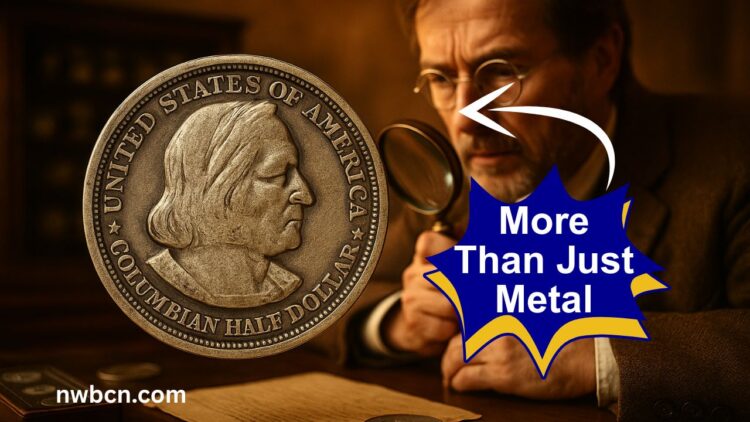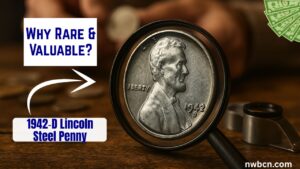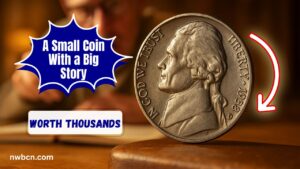The 1893 Columbian Exposition Half Dollar isn’t merely 90% silver in metal—it’s a piece of American history, minted to celebrate the 400th anniversary of Christopher Columbus’s voyage and the grandeur of the 1893 World’s Columbian Exposition in Chicago.
As the first U.S. commemorative coin, it forever changed numismatic history, weaving artistry, commerce, and international pride into a small yet powerful medium.
Origins: From Exposition Hopes to Coinage
- Congressional authorization in 1892 allowed $2.5 million worth of commemorative silver half dollars to fund the World’s Fair, later increased to $2.5 million (about 5 million coins).
- Design journey: While initially inspired by an Olin L. Warner-generated bust based on a Lorenzo Lotto painting, the final obverse of Columbus was executed by Charles E. Barber, with the reverse—Santa María above two hemispheres—crafted by George T. Morgan, both under Warner’s design concept.
- First strike occurred on November 19, 1892, with early specimens gifted to dignitaries and business partners, including a notable $10,000 publicity sale.
Production Details & Distribution
- Minting numbers:
- 1892: 950,000 coins.
- 1893: 1,550,405 coins.
- Sales:
- Priced at $1 each, about 400,000 sold at the Exposition.
- The rest were spread across banks or entered circulation; roughly 2 million circulated, the remainder were ultimately melted after 1893.
- Survival rates today:
- Circulated examples are common and often found for under $20.
- Uncirculated MS+ coins range from $1,000 to over $18,800 for top-grade specimens.
Key Specifications
| Feature | Details |
|---|---|
| Denomination | 50 cents (half dollar) |
| Composition | 90% silver, 10% copper |
| Weight | 12.50 g |
| Diameter | 30.61 mm |
| Edge | Reeded |
| Mint Year | 1893 |
| Mintage (1893) | 1,550,405 coins |
| Sales at Exposition | ~400,000 coins |
| Melted/Recycled | ~2 million coins (after fair) |
| Survival Range | $20 (circulated) to $18,800+ (MS68) |
Design: Embodying History in Metal
- Obverse (Barber): Right-facing bust of Columbus with inscriptions “UNITED STATES OF AMERICA” and “COLUMBIAN HALF DOLLAR.
- Reverse (Morgan): Santa María sailing above a double hemisphere with “WORLD’S COLUMBIAN EXPOSITION CHICAGO” encircling the design and “1893” across the bottom.
- Artistic collaboration bridged structural precision with historical narrative, strengthening the coins’ artistic value.
Market Trends & Value Insights
- Circulated coins under $20 remain easily accessible for hobbyists.
- AU to MS63 specimens typically trade from $100–$1,000, with significant eye appeal and toning adding value.
- Top-grade MS65–MS67 specimens command prestige prices:
- MS67 (1893): sold for $18,800 in 2019.
- MS68 examples are exceedingly rare but can fetch well into the five-figure bracket based on census reports.
Why Its Appeal Endures
- Historical significance: It’s the first U.S. coin commemorating a historical figure rather than allegorical imagery.
- World’s Fair connection: Tied to one of history’s most monumental cultural events—drawing over 27 million attendees.
- Design excellence: Collaboration between iconic engravers resulted in timeless aesthetics.
- Conservation story: Millions were destroyed, making high-grade survivors especially rare.
Circulated vs. Uncirculated Market Value
| Grade | Estimated Value |
|---|---|
| Circulated (G–VG) | $10–$20 |
| AU–MS63 | $100–$1,000 |
| MS64–MS66 | $1,000–$10,000 |
| MS67+ | $18,800+ |
Collecting Strategy & Authentication
- Grading matters: Certification by PCGS/NGC helps secure value, especially above MS64.
- Diagnostic lighting: Sharpness, mirror-like planes, and untouched luster define premium coins.
- Toning and surface quality: Natural, even toning with no spots boosts appeal.
- Market timing: Demand spikes when commemorative coin interest surges or if themed exhibits reawaken enthusiasm.
The 1893 Columbian Exposition Half Dollar remains a compelling fusion of art, history, and economics. As America’s first denominational commemorative, it embodies the triumphs and logistics of the World’s Columbian Exposition. From its humble circulation under $20 to its elevated value in high grades, it continues to enchant collectors—proving magic truly exists in coins.
FAQs
Q1: How many 1893 Columbian half dollars were originally minted and how many survive?
There were 1,550,405 minted in 1893, with approximately 2 million total struck across both years. Today, most circulate, while high-grade uncirculated examples are rare and valuable.
Q2: What determines its value today?
The coin’s condition, grading support, and toning quality are key. High-grade coins with lustrous surfaces (MS67+) can exceed $18,000.
Q3: Is it still possible to buy one under $100?
Yes. Circulated coins (Good to Fine condition) often sell between $20–$100, offering history without heavy investment.



